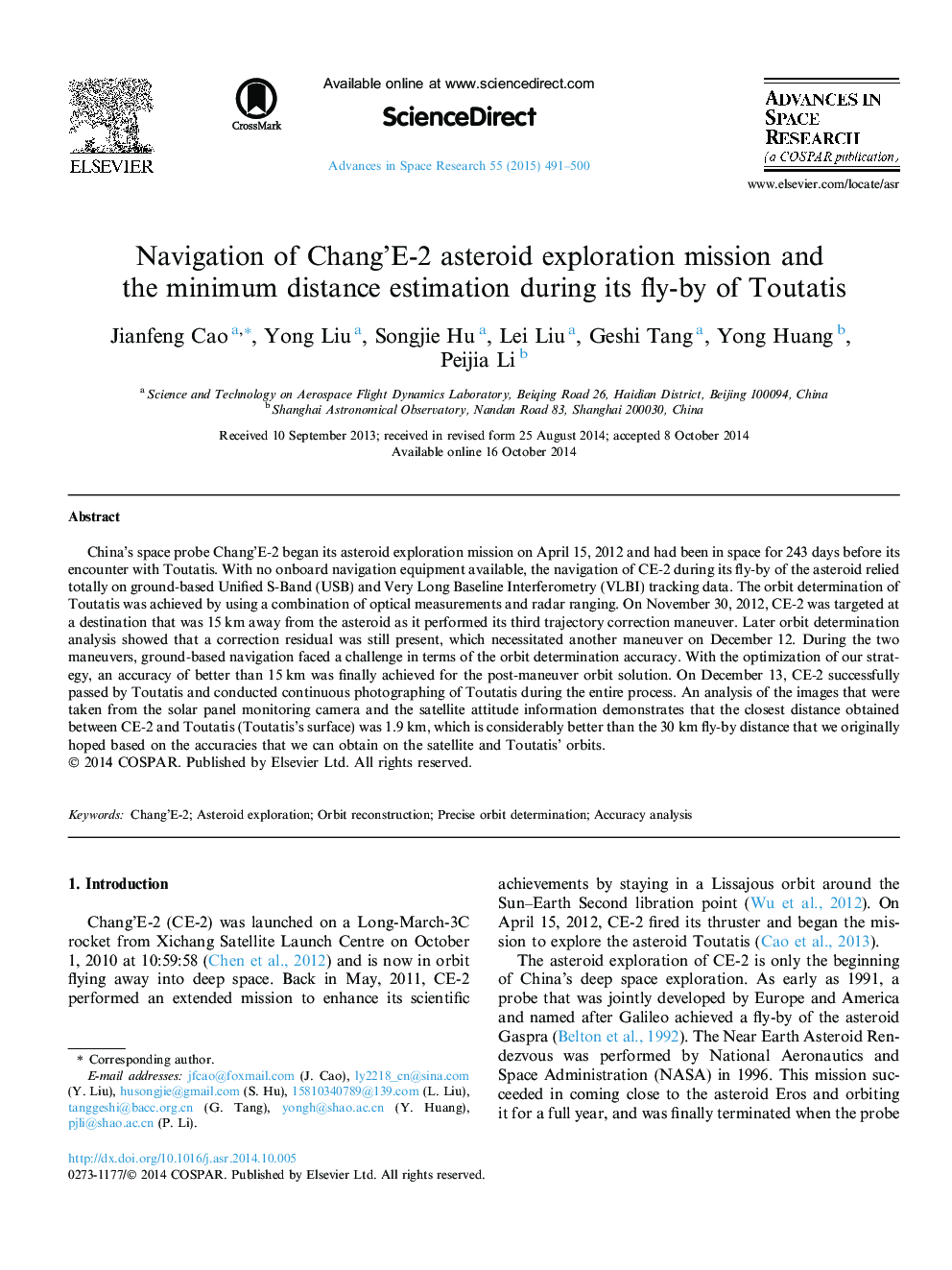| Article ID | Journal | Published Year | Pages | File Type |
|---|---|---|---|---|
| 1764149 | Advances in Space Research | 2015 | 10 Pages |
Abstract
China's space probe Chang'E-2 began its asteroid exploration mission on April 15, 2012 and had been in space for 243Â days before its encounter with Toutatis. With no onboard navigation equipment available, the navigation of CE-2 during its fly-by of the asteroid relied totally on ground-based Unified S-Band (USB) and Very Long Baseline Interferometry (VLBI) tracking data. The orbit determination of Toutatis was achieved by using a combination of optical measurements and radar ranging. On November 30, 2012, CE-2 was targeted at a destination that was 15Â km away from the asteroid as it performed its third trajectory correction maneuver. Later orbit determination analysis showed that a correction residual was still present, which necessitated another maneuver on December 12. During the two maneuvers, ground-based navigation faced a challenge in terms of the orbit determination accuracy. With the optimization of our strategy, an accuracy of better than 15Â km was finally achieved for the post-maneuver orbit solution. On December 13, CE-2 successfully passed by Toutatis and conducted continuous photographing of Toutatis during the entire process. An analysis of the images that were taken from the solar panel monitoring camera and the satellite attitude information demonstrates that the closest distance obtained between CE-2 and Toutatis (Toutatis's surface) was 1.9Â km, which is considerably better than the 30Â km fly-by distance that we originally hoped based on the accuracies that we can obtain on the satellite and Toutatis' orbits.
Related Topics
Physical Sciences and Engineering
Earth and Planetary Sciences
Space and Planetary Science
Authors
Jianfeng Cao, Yong Liu, Songjie Hu, Lei Liu, Geshi Tang, Yong Huang, Peijia Li,
